16 Best Waterfalls To See In Oregon
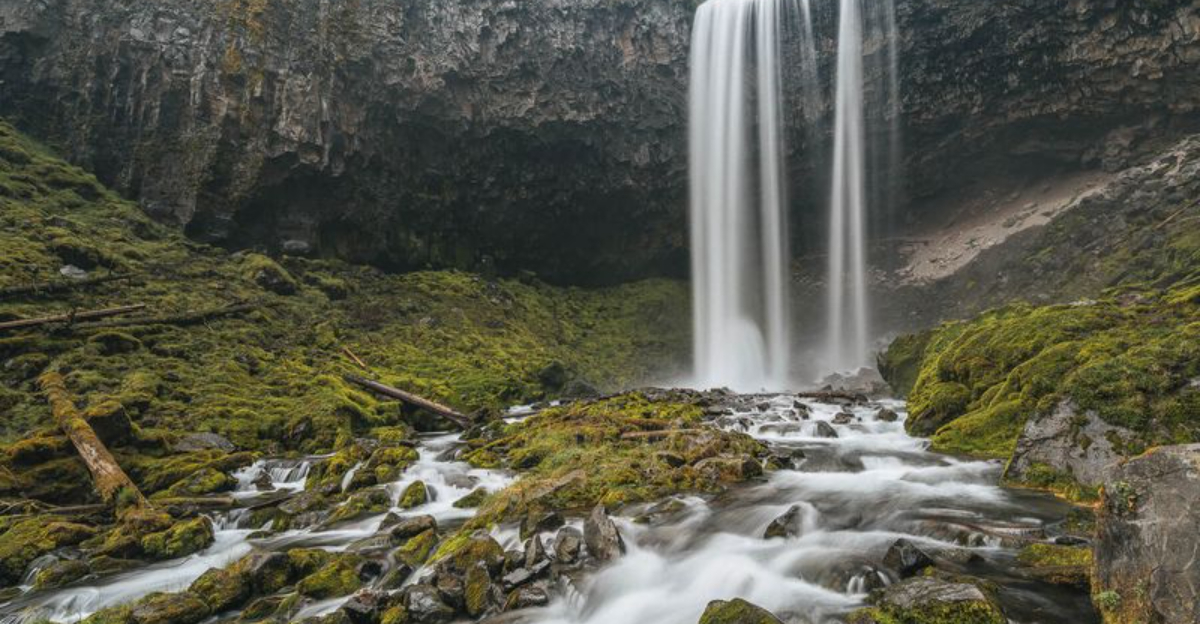
Oregon is a waterfall lover’s dream come true. With misty trails, moss-covered cliffs, and the soothing roar of falling water, each stop feels like stepping into a fantasy film set.
Some waterfalls require a short, easy stroll—perfect if you just want a quick nature fix—while others reward the more daring with epic hikes and secluded views. I’ve personally chased waterfalls across the state and found a few surprises that don’t always make the top lists but absolutely should.
Which one will become your favorite? Let’s dive into 16 of Oregon’s most unforgettable waterfalls—and maybe inspire your next wild and wonderful road trip.
1. Multnomah Falls – The Crown Jewel

Standing at a majestic 620 feet, Multnomah Falls reigns as Oregon’s tallest waterfall and most visited natural attraction. The iconic Benson Bridge spans across the lower cascade, offering visitors a perfect photo opportunity as mist rises from the thundering waters below.
I love visiting in early morning hours when crowds are thinner and the lighting is magical. Located just 30 minutes from Portland in the Columbia River Gorge, this two-tiered wonder is accessible year-round and features a historic lodge with a restaurant and gift shop.
Wheelchair-accessible viewpoints make this natural marvel available to everyone, regardless of mobility challenges.
2. Proxy Falls – Nature’s Delicate Veil
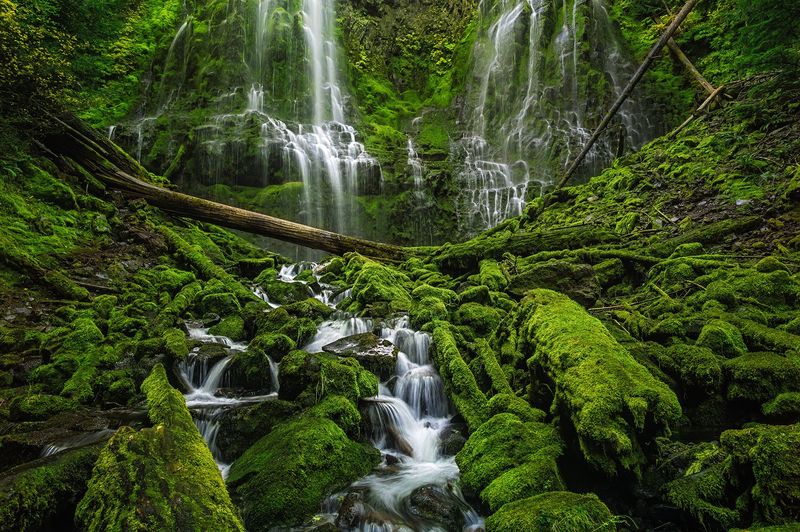
Hidden within the Three Sisters Wilderness, Proxy Falls cascades like a delicate lace veil over moss-covered basalt, creating one of the most photographed waterfalls in Oregon. The water doesn’t collect in a traditional pool but mysteriously disappears into a porous lava tube system beneath.
When I visited during spring, wildflowers dotted the 1.5-mile loop trail leading to this 226-foot masterpiece. The relatively easy hike makes it accessible for families, though the trail is typically closed during winter months due to snow.
Bring a polarizing filter for your camera – it helps cut through water reflections and captures the fall’s intricate details.
3. Toketee Falls – Columnar Basalt Showcase

Framed by remarkable columnar basalt formations, Toketee Falls plunges 113 feet in two distinct tiers through a narrow gorge. The geometric precision of these volcanic rock columns creates a natural amphitheater that amplifies the waterfall’s powerful roar.
A short 0.8-mile round-trip hike leads to a viewing platform overlooking this geological wonder. Though the official trail ends at the platform, adventurous visitors sometimes forge their own path down to the base – something I don’t recommend due to safety concerns.
Located near the North Umpqua River, this waterfall maintains impressive flow year-round thanks to the regulated release from upstream hydroelectric facilities.
4. Latourell Falls – Green Lichen Contrast
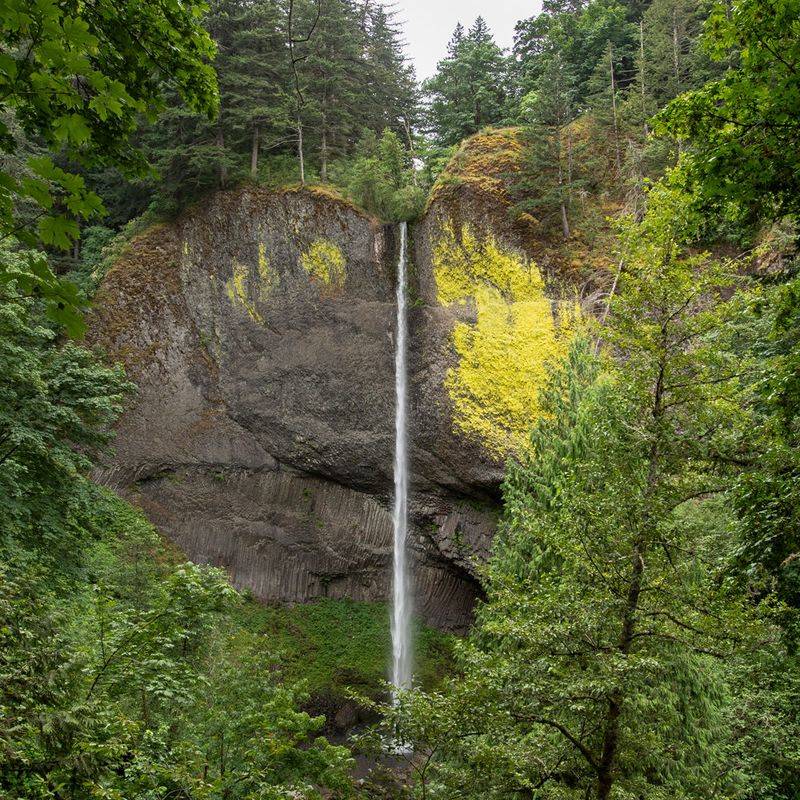
Latourell Falls instantly captivates with its striking contrast – bright yellow-green lichen decorates the black basalt cliff face beside a plunging 249-foot single-drop waterfall. Unlike many Columbia Gorge waterfalls, Latourell drops straight down without touching the cliff face, creating a dramatic visual effect.
The lower viewpoint sits just steps from the parking area, making it one of the most accessible major waterfalls in Oregon. For a more immersive experience, I recommend taking the 2.4-mile loop trail that circles up to Upper Latourell Falls and returns along the creek.
Fall and spring offer the most photogenic conditions when water volumes are high and the surrounding forest vibrant.
5. Punch Bowl Falls – Nature’s Perfect Swimming Hole
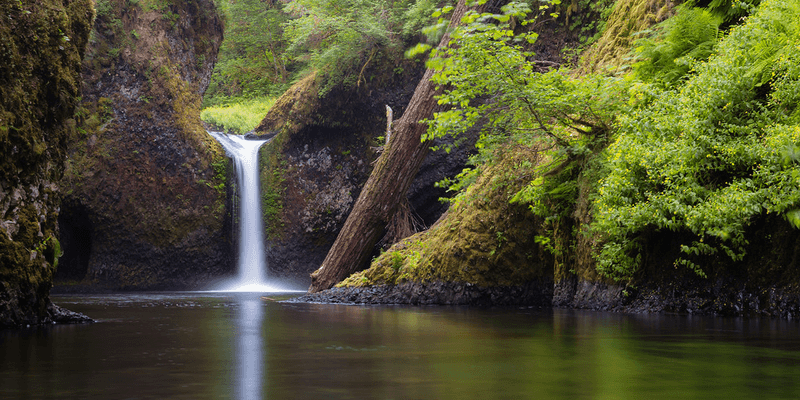
Nestled in the heart of Eagle Creek Trail, Punch Bowl Falls earned its name from the perfect bowl-shaped basin carved by centuries of falling water. During summer months, the deep emerald pool at its base becomes one of Oregon’s most inviting natural swimming holes, though the water remains breathtakingly cold year-round.
Getting here requires a moderate 2-mile hike along a cliff-hugging trail with some exposed sections. The view from the official overlook is lovely, but for that classic shot, you’ll need to scramble down to creek level where the bowl shape becomes apparent.
If you’re feeling adventurous, continue hiking to witness several more waterfalls deeper along this spectacular trail.
6. South Falls – Walk Behind The Curtain
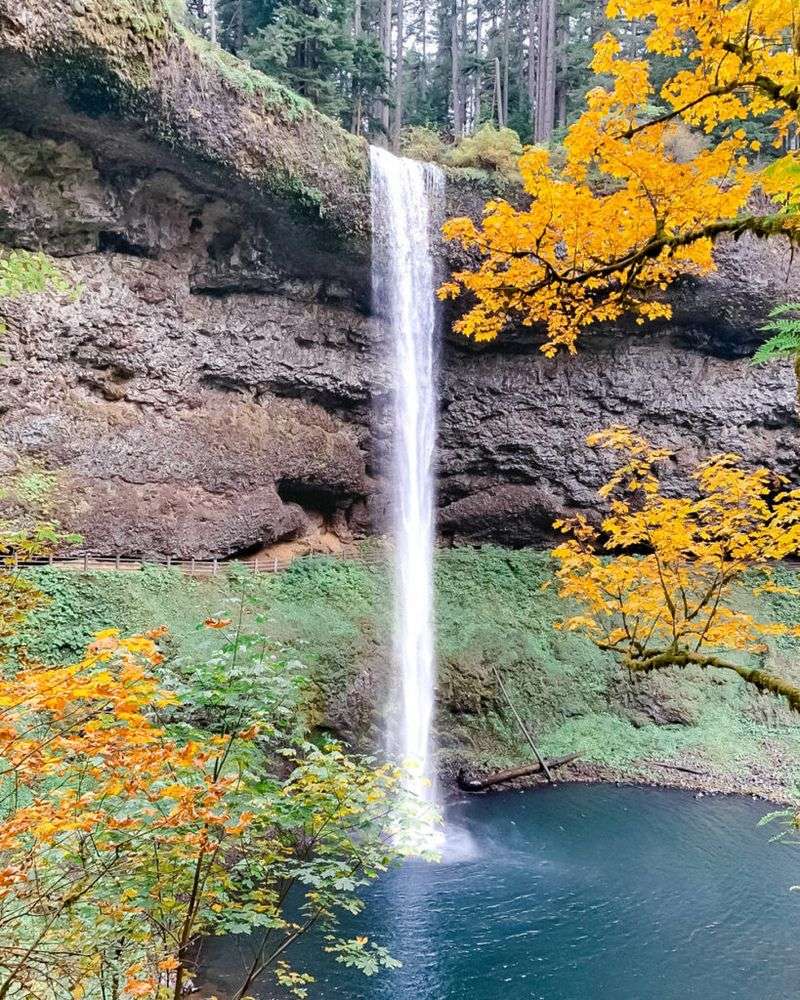
South Falls offers a truly immersive waterfall experience as the trail leads visitors behind the 177-foot curtain of water, creating an unforgettable perspective. The thundering sound, cool mist, and play of light through the water make this Silver Falls State Park highlight a sensory delight.
What makes this location special is that it’s just one of ten waterfalls on the park’s famous “Trail of Ten Falls” loop. During my autumn visit, the surrounding maple trees turned brilliant shades of orange and red, framing the falls in seasonal color.
The cave-like passage behind the falls provides excellent shelter during rain showers and unique photographic opportunities you won’t find at most other waterfall destinations.
7. Sahalie Falls – Blue Pool Wonder

Sahalie Falls thunders down 100 feet into a vibrant sapphire-blue pool that seems almost artificially colored due to its intensity. The distinctive color comes from dissolved minerals and the exceptional clarity of the McKenzie River’s spring-fed waters.
The viewing platform sits just steps from the parking area, making this a perfect stop for travelers of all abilities. I particularly enjoy visiting after heavy rains when the waterfall becomes a raging torrent that fills the canyon with mist and rainbow reflections.
For a fuller experience, take the 2.6-mile loop trail that connects Sahalie with nearby Koosah Falls, following the McKenzie River through ancient forest and fascinating lava landscapes.
8. Ramona Falls – The Delicate Masterpiece
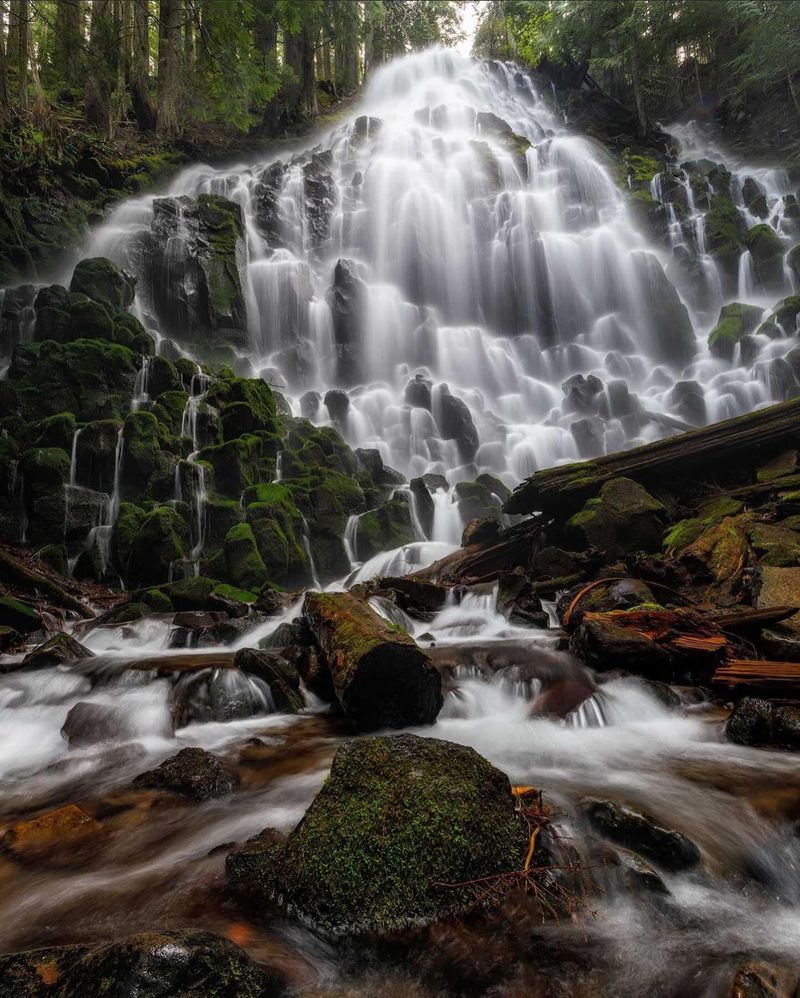
Unlike Oregon’s thundering giants, Ramona Falls presents as a delicate 120-foot lacework of water streaming over a stepped rock face resembling a natural staircase. Hundreds of rivulets create a complex pattern that changes with the seasons and light conditions.
Reaching this masterpiece requires commitment – a 7-mile round-trip hike with moderate elevation gain and a seasonal log crossing over the Sandy River. During my summer visit, the surrounding forest was alive with birdsong and wildflowers dotted the trail.
The falls face northwest, making mid-afternoon the optimal time for photography when sunlight illuminates the cascading water against the dark volcanic rock backdrop.
9. Watson Falls – Second Tallest in Oregon

Watson Falls plummets an impressive 272 feet down a moss-draped cliff, earning its place as Oregon’s second tallest waterfall. The narrow stream creates an ethereal effect as it seems to float through the air before disappearing into the lush vegetation below.
A short but steep 0.6-mile trail leads to the base of this magnificent cascade in the Umpqua National Forest. I recommend visiting in spring when snowmelt maximizes the water volume and the surrounding forest floor erupts with trillium flowers and other woodland blooms.
The wooden footbridge crossing the stream below the falls offers a perfect vantage point for photos and a refreshing splash of mist on hot summer days.
10. Abiqua Falls – Hidden Basalt Amphitheater
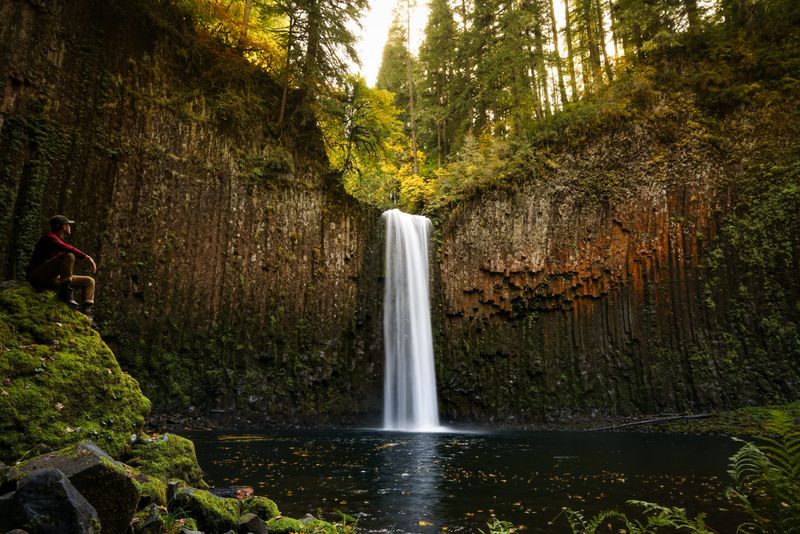
Tucked away on private timber land (with public access permitted), Abiqua Falls rewards adventurous travelers with one of Oregon’s most dramatic settings. The 80-foot waterfall plunges into a perfect amphitheater of columnar basalt – a geological formation resembling a giant’s pipe organ.
Getting here isn’t easy. The access road demands high-clearance vehicles, followed by a steep, sometimes muddy trail descent using ropes for stability. Though challenging, this journey ensures smaller crowds and a more intimate experience with this natural wonder.
During winter and spring visits, bring waterproof gear as the increased spray will soak anyone approaching the falls’ base where massive fallen basalt columns provide natural seating.
11. White River Falls – Desert Oasis Surprise
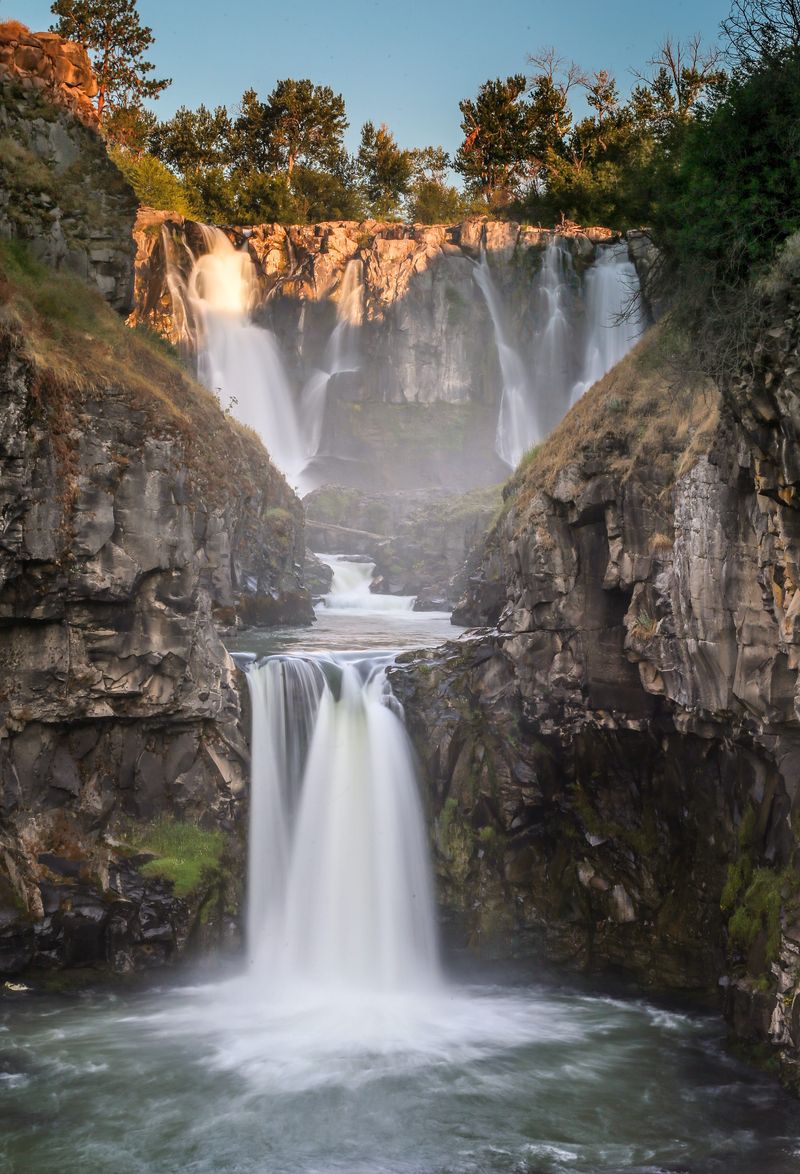
Unlike most Oregon waterfalls nestled in lush forests, White River Falls surprises visitors as a 90-foot cascade in the high desert landscape of Central Oregon. This two-tiered waterfall transforms dramatically with the seasons – from thundering spring flows to more delicate summer streams.
The falls sit within a small state park that was once home to a hydroelectric power plant. Remains of the historic structure add a fascinating human element to the natural beauty. During my July visit, I enjoyed a picnic on the grassy area above the falls while watching osprey hunt in the river below.
The short but steep trail to the bottom reveals the lower tier and offers a refreshing escape from summer heat.
12. Tumalo Falls – Bend’s Backyard Beauty
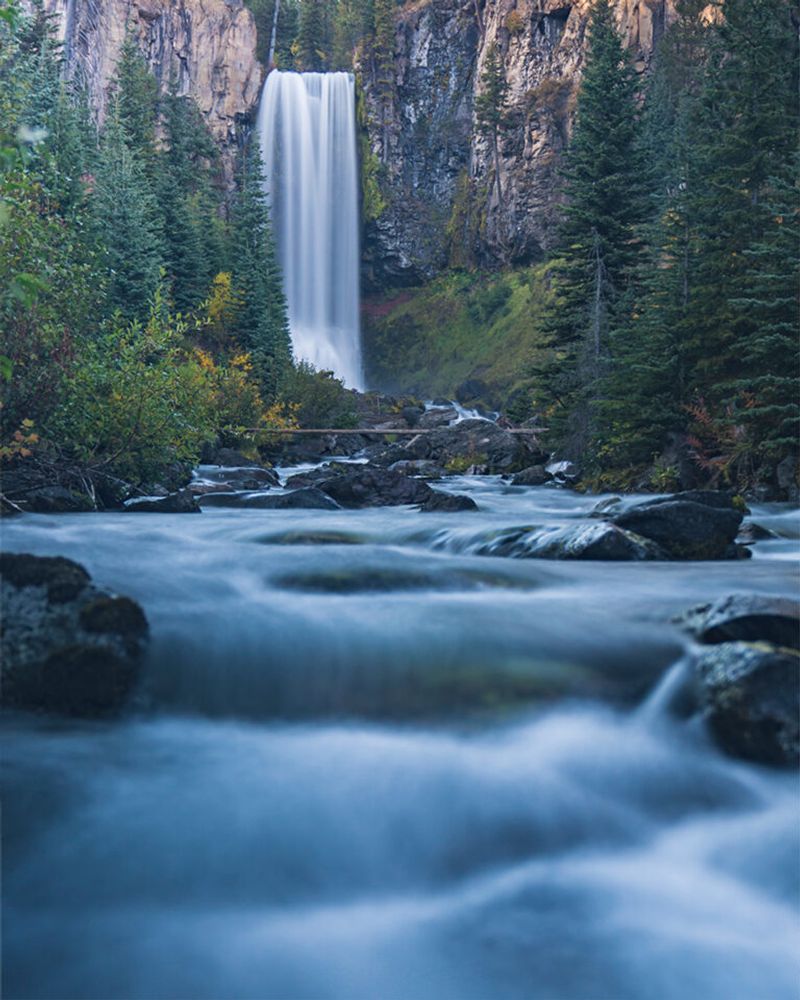
Just 10 miles from downtown Bend, Tumalo Falls offers a spectacular 97-foot plunge that’s accessible with minimal effort. The viewpoint near the parking area provides an excellent vantage point, but I strongly recommend the short climb to the upper observation deck for an even more impressive perspective.
What makes this location special is the network of trails extending beyond the main attraction. Following the creek upstream reveals multiple additional cascades in quick succession, each with its own character and charm.
Winter transforms this area into a snow-sports paradise, while summer evenings offer the chance to photograph the falls in golden hour light when fewer visitors are present.
13. Koosah Falls – McKenzie River’s Powerful Plunge
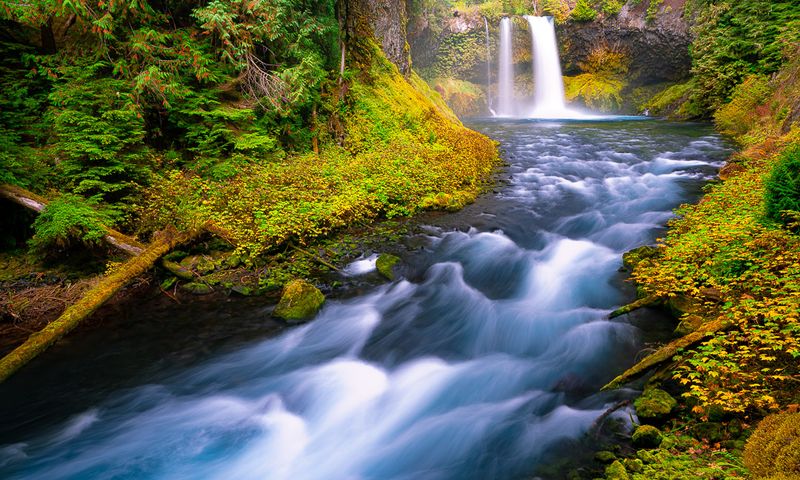
Koosah Falls demonstrates raw power as the McKenzie River narrows and plunges 70 feet into a churning pool of electric blue water. The name “Koosah” comes from a Chinook word meaning “sky,” perfectly describing how the water seems to fall from the heavens.
Located just downstream from Sahalie Falls, these two magnificent cascades can be visited together via the 2.6-mile loop trail. During winter months, the surrounding forest sometimes receives a dusting of snow, creating a magical contrast against the never-freezing river.
Multiple viewing platforms offer different perspectives, but my favorite spot is slightly downstream where you can capture both the falls and the rushing turquoise river in a single frame.
14. Salt Creek Falls – Second Highest Single Drop

Plummeting 286 feet in a single impressive drop, Salt Creek Falls ranks as Oregon’s second highest single-drop waterfall. The thundering cascade creates a constant mist that nurtures a microclimate of ferns and mosses clinging to the surrounding cliff faces.
The main viewing platform sits just a short walk from the parking area, making this a perfect stop along the scenic Highway 58. For more adventurous visitors, a trail descends to the base of the falls, though it’s steep and can be slippery when wet.
Winter transforms this area into a wonderland of ice formations, but requires snowshoes to access as the road isn’t plowed beyond the highway.
15. Tamanawas Falls – Mount Hood’s Eastern Gem

Tucked away on Mount Hood’s less-visited eastern slope, Tamanawas Falls spreads 100 feet wide as it cascades 150 feet over a recessed cliff face. The name comes from a Native American word meaning “friendly spirit guide,” which feels appropriate for this welcoming natural wonder.
A moderate 3.6-mile round-trip hike follows Cold Spring Creek through old-growth forest to reach the falls. What makes this trail special is how it passes through a boulder field created by ancient lava flows before revealing the waterfall’s grand finale.
During winter months, ice formations sometimes create a partial curtain across the falls, though microbursts of spray prevent it from freezing completely.
16. Wahclella Falls – Family-Friendly Adventure

Wahclella Falls offers the perfect combination of accessibility and wild beauty that makes it ideal for families with children. The 2-mile round-trip hike follows Tanner Creek through a narrow gorge before revealing the two-tiered, 350-foot waterfall tucked into an amphitheater of stone.
Though closed for several years after the 2017 Eagle Creek Fire, the trail reopened with new growth already transforming the landscape. I visited recently and was amazed by the vibrant green ferns and moss reclaiming the blackened tree trunks – nature’s resilience on full display.
The relatively flat trail, multiple bridge crossings, and constant views of rushing water keep children engaged throughout the journey.
